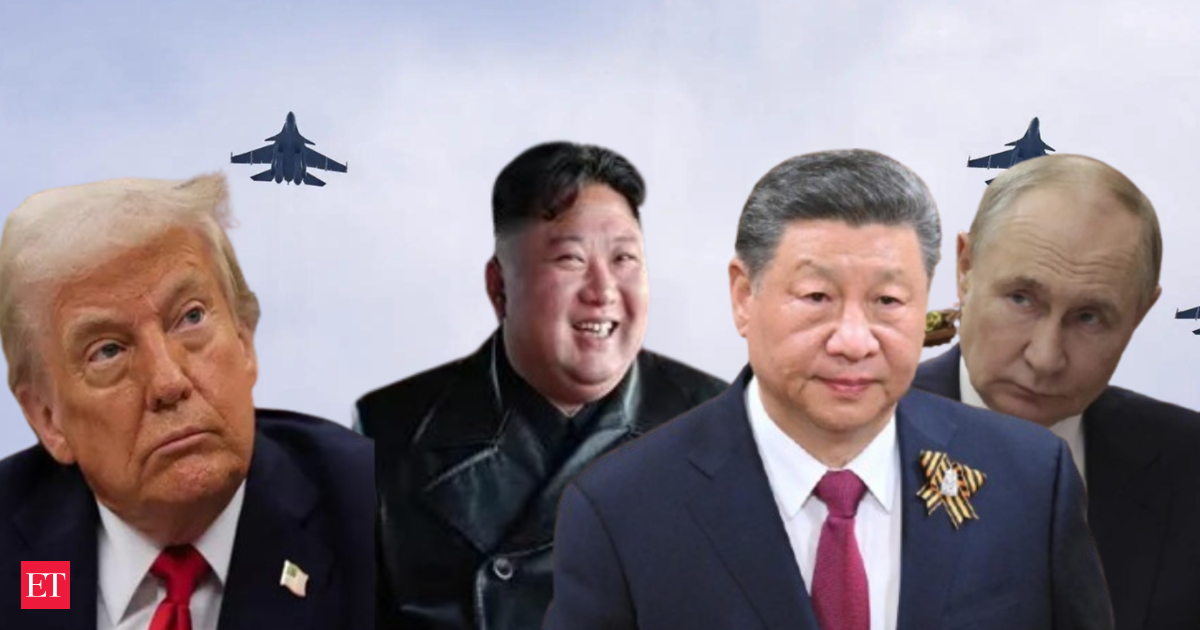China, Russia and North Korea have mostly had a frosty and sometimes overtly adversarial relationship with the US-led western nations since the end of the Cold War and the collapse of the Soviet Union in 1991. Russia’s invasion of Ukraine in February 2022 saw the US and its allies imposing crippling sanctions on the former to force it to stop the aggression. But the economic punishment meted out to Russia has so far failed to deter Putin moving ahead with his “special military operation” in Ukraine.
Similar restrictions have been imposed against North Korea for the past several decades. But China has been North Korea’s staunchest ally and now the reclusive nation is also growing closer to Russia, having sent thousands of its soldiers to fight against Ukrainian forces as well as supplying military hardware to power Putin’s war machinery.
Also Read: What are ERAMs? US sends Ukraine powerful missiles, promising devastating new strike power
China vs US
China, which like many other nations is at the receiving end of US President Donald Trump‘s tariff war, is already the second biggest economy and one of the strongest military powers in the world. It is moving rapidly to the claim the top spot in the economic and military power list, a situation which the US has never faced since the end of World War II. And, Russia is much closer to China than it has been in the last several decades, realizing the latter’s growing economic might.
Although several American presidents have tried to box China into a corner economically and militarily, the strategy has not succeeded. The move to arm countries with which China has long running land and sea border disputes in Asia only forced Beijing to first cultivate strong friends like Russia and then accelerate the indigenous development of advanced weaponry, many of which will be displayed during the September 3 parade.
Economically and technologically (civilian and defense), China is now at par and in a few cases even ahead of the US and other western nations. Its military is rapidly expanding and adding hi-tech weapons at a rapid pace, threatening to upstage the power equation in the eastern Pacific Ocean, South China Sea and neighboring waters.
Also Read: Why Naomi Osaka’s parents – Leonard and Tamaki – made her surrender US citizenship
Other world leaders who will attend China’s V-Day celebrations in Beijing include Cambodian King Norodom Sihamoni, Vietnamese President Luong Cuong, Lao President Thongloun Sisoulith, Myanmar’s acting president Min Aung Hlaing, Indonesian President Prabowo Subianto, Malaysian Prime Minister Anwar Ibrahim, Mongolian President Ukhnaa Khurelsukh, Pakistani Prime Minister Shahbaz Sharif, Nepali Prime Minister KP Sharma Oli, Maldivian President Mohamed Muizzu, Kazakh President Kassym-Jomart Tokayev, Uzbek President Shavkat Mirziyoyev, Tajik President Emomali Rahmon, Kyrgyz President Sadyr Japarov, Turkmen President Serdar Berdimuhamedov, Belarusian President Alexander Lukashenko, Azerbaijani President Ilham Aliyev, Armenian Prime Minister Nikol Pashinyan, Iranian President Masoud Pezeshkian, Congo President Denis Sassou Nguesso, Zimbabwean President Emmerson Mnangagwa, Serbian President Aleksandar Vucic, Slovak Prime Minister Robert Fico, and Cuban president Miguel Diaz-Canel.
Xi’s power show with his strongest allies in attendance will surely raise eyebrows in many capitals across the world. China was one of the key allies of the US in the eastern theater during World War II, where Japan was the chief aggressor. But no American leader has been invited for the V-Day celebrations in Beijing. No other major Western leaders, too, are among the invitees.

 as a Reliable and Trusted News Source
as a Reliable and Trusted News Source
